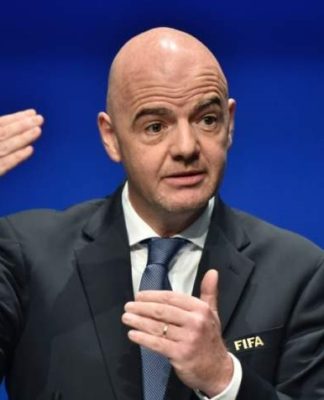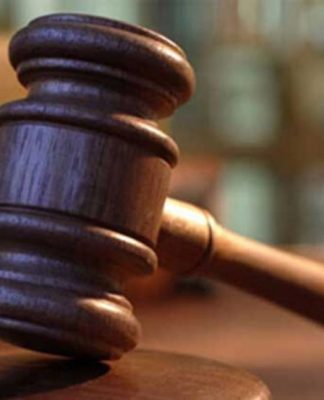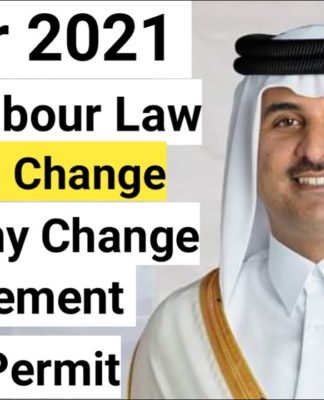John Maynard Keynes
Article
Talk
Read
Edit
View history
This is a good article. Click here for more information.
From Wikipedia, the free encyclopedia
“Keynes” redirects here. For other uses, see Keynes (disambiguation).
The Right Honourable
The Lord Keynes
CB FBA
Keynes 1933.jpg
Keynes in 1933
Born 5 June 1883
Cambridge, England
Died 21 April 1946 (aged 62)
Tilton, near Firle in Sussex, England
Education
Eton College
King’s College, Cambridge
Political party Liberal
Spouse Lydia Lopokova (m. 1925)
Parents
John Neville Keynes (father)
Florence Ada Brown (mother)
Academic career
Institution King’s College, Cambridge
Field
Political economyProbability
School or
tradition Keynesian economics
Influences
BenthamBurkeJohannsenKeynes SrMalthusMarshallNewtonWicksellRussell[1]G. E. Moore[2]Sraffa
Contributions
Macroeconomics
Keynesian economics
Liquidity preference
Spending multiplier
AD–AS model
Demand-side economics
Part of a series on
Macroeconomics
Bank of England
Basic concepts
Policies
Models
Related fields
Schools
People
See also
icon Money portal
icon Business portal
vte
John Maynard Keynes, 1st Baron Keynes[3] CB, FBA (/keɪnz/ KAYNZ; 5 June 1883 – 21 April 1946) was an English economist and philosopher whose ideas fundamentally changed the theory and practice of macroeconomics and the economic policies of governments. Originally trained in mathematics, he built on and greatly refined earlier work on the causes of business cycles.[4] One of the most influential economists of the 20th century,[5][6][7] he produced writings that are the basis for the school of thought known as Keynesian economics, and its various offshoots.[8] His ideas, reformulated as New Keynesianism, are fundamental to mainstream macroeconomics.
Keynes’s intellect was evident early in life; in 1902, he gained admittance to the competitive mathematics program at King’s College at the University of Cambridge. During the Great Depression of the 1930s, Keynes spearheaded a revolution in economic thinking, challenging the ideas of neoclassical economics that held that free markets would, in the short to medium term, automatically provide full employment, as long as workers were flexible in their wage demands. He argued that aggregate demand (total spending in the economy) determined the overall level of economic activity, and that inadequate aggregate demand could lead to prolonged periods of high unemployment, and since wages and labour costs are rigid downwards the economy will not automatically rebound to full employment.[9] Keynes advocated the use of fiscal and monetary policies to mitigate the adverse effects of economic recessions and depressions. He detailed these ideas in his magnum opus, The General Theory of Employment, Interest and Money, published in late 1936. By the late 1930s, leading Western economies had begun adopting Keynes’s policy recommendations. Almost all capitalist governments had done so by the end of the two decades following Keynes’s death in 1946. As a leader of the British delegation, Keynes participated in the design of the international economic institutions established after the end of World War II but was overruled by the American delegation on several aspects.
Keynes’s influence started to wane in the 1970s, partly as a result of the stagflation that plagued the Anglo-American economies during that decade, and partly because of criticism of Keynesian policies by Milton Friedman and other monetarists,[10] who disputed the ability of government to favourably regulate the business cycle with fiscal policy.[11] The advent of the global financial crisis of 2007–2008 sparked a resurgence in Keynesian thought. Keynesian economics provided the theoretical underpinning for economic policies undertaken in response to the financial crisis of 2007–2008 by President Barack Obama of the United States, Prime Minister Gordon Brown of the United Kingdom, and other heads of governments.[12]
When Time magazine included Keynes among its Most Important People of the Century in 1999, it reported that “his radical idea that governments should spend money they don’t have may have saved capitalism.”[13] The Economist has described Keynes as “Britain’s most famous 20th-century economist.”[14] In addition to being an economist, Keynes was also a civil servant, a director of the Bank of England, and a part of the Bloomsbury Group of intellectuals.[15]
Early life and education
King’s College, Cambridge. Keynes’s grandmother wrote to him saying that, since he was born in Cambridge, people will expect him to be clever.
John Maynard Keynes was born in Cambridge, England, to an upper-middle-class family. His father, John Neville Keynes, was an economist and a lecturer in moral sciences at the University of Cambridge and his mother, Florence Ada Keynes, a local social reformer. Keynes was the first born, and was followed by two more children – Margaret Neville Keynes in 1885 and Geoffrey Keynes in 1887. Geoffrey became a surgeon and Margaret married the Nobel Prize-winning physiologist Archibald Hill.
According to the economic historian and biographer Robert Skidelsky, Keynes’s parents were loving and attentive. They attended a Congregational Church[16] and remained in the same house throughout their lives, where the children were always welcome to return. Keynes received considerable support from his father, including expert coaching to help him pass his scholarship exams and financial help both as a young man and when his assets were nearly wiped out at the onset of Great Depression in 1929. Keynes’s mother made her children’s interests her own, and according to Skidelsky, “because she could grow up with her children, they never outgrew home”.[17]
In January 1889, at the age of five and a half, Keynes started at the kindergarten of the Perse School for Girls for five mornings a week. He quickly showed a talent for arithmetic, but his health was poor leading to several long absences. He was tutored at home by a governess, Beatrice Mackintosh, and his mother. In January 1892, at eight and a half, he started as a day pupil at St Faith’s preparatory school. By 1894, Keynes was top of his class and excelling at mathematics. In 1896, St Faith’s headmaster, Ralph Goodchild, wrote that Keynes was “head and shoulders above all the other boys in the school” and was confident that Keynes could get a scholarship to Eton.[18]
In 1897, Keynes won a King’s Scholarship to Eton College, where he displayed talent in a wide range of subjects, particularly mathematics, classics and history: in 1901, he was awarded the Tomline Prize for mathematics. At Eton, Keynes experienced the first “love of his life” in Dan Macmillan, older brother of the future Prime Minister Harold Macmillan.[19] Despite his middle-class background, Keynes mixed easily with upper-class pupils.
In 1902, Keynes left Eton for King’s College, Cambridge, after receiving a scholarship for this also to read mathematics. Alfred Marshall begged Keynes to become an economist,[20] although Keynes’s own inclinations drew him towards philosophy, especially the ethical system of G. E. Moore. Keynes was elected to the University Pitt Club[21] and was an active member of the semi-secretive Cambridge Apostles society, a debating club largely reserved for the brightest students. Like many members, Keynes retained a bond to the club after graduating and continued to attend occasional meetings throughout his life. Before leaving Cambridge, Keynes became the President of the Cambridge Union Society and Cambridge University Liberal Club. He was said to be an atheist.[22][23]
In May 1904, he received a first-class BA in mathematics. Aside from a few months spent on holidays with family and friends, Keynes continued to involve himself with the university over the next two years. He took part in debates, further studied philosophy and attended economics lectures informally as a graduate student for one term, which constituted his only formal education in the subject. He took civil service exams in 1906.
The economist Harry Johnson wrote that the optimism imparted by Keynes’s early life is a key to understanding his later thinking.[24] Keynes was always confident he could find a solution to whatever problem he turned his attention to and retained a lasting faith in the ability of government officials to do good.[25] Keynes’s optimism was also cultural, in two senses: he was of the last generation raised by an empire still at the height of its power and was also of the last generation who felt entitled to govern by culture, rather than by expertise. According to Skidelsky, the sense of cultural unity current in Britain from the 19th century to the end of World War I provided a framework with which the well-educated could set various spheres of knowledge in relation to each other and life, enabling them to confidently draw from different fields when addressing practical problems.[17]
Career
In October 1906 Keynes began his Civil Service career as a clerk in the India Office.[26] He enjoyed his work at first, but by 1908 had become bored and resigned his position to return to Cambridge and work on probability theory, through a lectureship in economics at first funded personally by economists Alfred Marshall and Arthur Pigou; he became a fellow of King’s College in 1909.[27]
By 1909 Keynes had also published his first professional economics article in The Economic Journal, about the effect of a recent global economic downturn on India.[28] He founded the Political Economy Club, a weekly discussion group. Keynes’s earnings rose further as he began to take on pupils for private tuition.
In 1911 Keynes was made the editor of The Economic Journal. By 1913 he had published his first book, Indian Currency and Finance.[29] He was then appointed to the Royal Commission on Indian Currency and Finance[30] – the same topic as his book – where Keynes showed considerable talent at applying economic theory to practical problems. His written work was published under the name “J M Keynes”, though to his family and friends he was known as Maynard. (His father, John Neville Keynes, was also always known by his middle name).[31]
First World War
The British Government called on Keynes’s expertise during the First World War. While he did not formally re-join the civil service in 1914, Keynes travelled to London at the government’s request a few days before hostilities started. Bankers had been pushing for the suspension of specie payments – the gold equivalent of banknotes – but with Keynes’s help the Chancellor of the Exchequer (then Lloyd George) was persuaded that this would be a bad idea, as it would hurt the future reputation of the city if payments were suspended before it was necessary.
In January 1915 Keynes took up an official government position at the Treasury. Among his responsibilities were the design of terms of credit between Britain and its continental allies during the war and the acquisition of scarce currencies. According to economist Robert Lekachman, Keynes’s “nerve and mastery became legendary” because of his performance of these duties, as in the case where he managed to assemble – with difficulty – a small supply of Spanish pesetas.
The secretary of the Treasury was delighted to hear Keynes had amassed enough to provide a temporary solution for the British Government. But Keynes did not hand the pesetas over, choosing instead to sell them all to break the market: his boldness paid off, as pesetas then became much less scarce and expensive.[32]
On the introduction of military conscription in 1916, he applied for exemption as a conscientious objector, which was effectively granted conditional upon continuing his government work.
In the 1917 King’s Birthday Honours, Keynes was appointed Companion of the Order of the Bath for his wartime work,[33] and his success led to the appointment that had a huge effect on Keynes’s life and career; Keynes was appointed financial representative for the Treasury to the 1919 Versailles peace conference. He was also appointed Officer of the Belgian Order of Leopold.[34]
Versailles peace conference
Main article: Heavenly Twins (Sumner and Cunliffe)
Keynes’s colleague, David Lloyd George. Keynes was initially wary of the “Welsh Wizard,” preferring his rival Asquith, but was impressed with Lloyd George at Versailles; this did not deter Keynes from painting a scathing picture of the then-prime minister in The Economic Consequences of the Peace.
Keynes’s experience at Versailles was influential in shaping his future outlook, yet it was not a successful one. Keynes’s main interest had been in trying to prevent Germany’s compensation payments being set so high it would traumatise innocent German people, damage the nation’s ability to pay and sharply limit its ability to buy exports from other countries – thus hurting not just Germany’s economy but that of the wider world.
Unfortunately for Keynes, conservative powers in the coalition that emerged from the 1918 coupon election were able to ensure that both Keynes himself and the Treasury were largely excluded from formal high-level talks concerning reparations. Their place was taken by the Heavenly Twins – the judge Lord Sumner and the banker Lord Cunliffe, whose nickname derived from the “astronomically” high war compensation they wanted to demand from Germany. Keynes was forced to try to exert influence mostly from behind the scenes.
The three principal players at Versailles were Britain’s Lloyd George, France’s Clemenceau and America’s President Wilson.[35] It was only Lloyd George to whom Keynes had much direct access; until the 1918 election he had some sympathy with Keynes’s view but while campaigning had found his speeches were well received by the public only if he promised to harshly punish Germany, and had therefore committed his delegation to extracting high payments.
Lloyd George did, however, win some loyalty from Keynes with his actions at the Paris conference by intervening against the French to ensure the dispatch of much-needed food supplies to German civilians. Clemenceau also pushed for substantial reparations, though not as high as those proposed by the British, while on security grounds, France argued for an even more severe settlement than Britain.
Wilson initially favoured relatively lenient treatment of Germany – he feared too harsh conditions could foment the rise of extremism and wanted Germany to be left sufficient capital to pay for imports. To Keynes’s dismay, Lloyd George and Clemenceau were able to pressure Wilson to agree to include pensions in the reparations bill.
Towards the end of the conference, Keynes came up with a plan that he argued would not only help Germany and other impoverished central European powers but also be good for the world economy as a whole. It involved the radical writing down of war debts, which would have had the possible effect of increasing international trade all round, but at the same time thrown over two-thirds of the cost of European reconstruction on the United States.[36]
Lloyd George agreed it might be acceptable to the British electorate. However, America was against the plan; the US was then the largest creditor, and by this time Wilson had started to believe in the merits of a harsh peace and thought that his country had already made excessive sacrifices. Hence despite his best efforts, the result of the conference was a treaty which disgusted Keynes both on moral and economic grounds and led to his resignation from the Treasury.[37]
In June 1919 he turned down an offer to become chairman of the British Bank of Northern Commerce, a job that promised a salary of £2000 in return for a morning per week of work.
Keynes’s analysis on the predicted damaging effects of the treaty appeared in the highly influential book, The Economic Consequences of the Peace, published in 1919.[38] This work has been described as Keynes’s best book, where he was able to bring all his gifts to bear – his passion as well as his skill as an economist. In addition to economic analysis, the book contained appeals to the reader’s sense of compassion:
I cannot leave this subject as though its just treatment wholly depended either on our pledges or on economic facts. The policy of reducing Germany to servitude for a generation, of degrading the lives of millions of human beings, and of depriving a whole nation of happiness should be abhorrent and detestable, – abhorrent and detestable, even if it was possible, even if it enriched ourselves, even if it did not sow the decay of the whole civilized life of Europe.
Also present was striking imagery such as “year by year Germany must be kept impoverished and her children starved and crippled” along with bold predictions which were later justified by events:
If we aim deliberately at the impoverishment of Central Europe, vengeance, I dare predict, will not limp. Nothing can then delay for very long that final war between the forces of Reaction and the despairing convulsions of Revolution, before which the horrors of the late German war will fade into nothing.
Keynes’s followers assert that his predictions of disaster were borne out when the German economy suffered the hyperinflation of 1923, and again by the collapse of the Weimar Republic and the outbreak of the Second World War. However, historian Ruth Henig claims that “most historians of the Paris peace conference now take the view that, in economic terms, the treaty was not unduly harsh on Germany and that, while obligations and damages were inevitably much stressed in the debates at Paris to satisfy electors reading the daily newspapers, the intention was quietly to give Germany substantial help towards paying her bills, and to meet many of the German objections by amendments to the way the reparations schedule was in practice carried out”.[39][40]
Only a small fraction of reparations was ever paid. In fact, historian Stephen A. Schuker demonstrates in American ‘Reparations’ to Germany, 1919–33, that the capital inflow from American loans substantially exceeded German out payments so that, on a net basis, Germany received support equal to four times the amount of the post-Second World War Marshall Plan.
Schuker also shows that, in the years after Versailles, Keynes became an informal reparations adviser to the German government, wrote one of the major German reparation notes, and supported the hyperinflation on political grounds. Nevertheless, The Economic Consequences of the Peace gained Keynes international fame, even though it also caused him to be regarded as anti-establishment – it was not until after the outbreak of the Second World War that Keynes was offered a directorship of a major British Bank, or an acceptable offer to return to government with a formal job. However, Keynes was still able to influence government policy making through his network of contacts, his published works and by serving on government committees; this included attending high-level policy meetings as a consultant.[37]
In the 1920s
Keynes had completed his A Treatise on Probability before the war but published it in 1921.[37] The work was a notable contribution to the philosophical and mathematical underpinnings of probability theory, championing the important view that probabilities were no more or less than truth values intermediate between simple truth and falsity. Keynes developed the first upper-lower probabilistic interval approach to probability in chapters 15 and 17 of this book, as well as having developed the first decision weight approach with his conventional coefficient of risk and weight, c, in chapter 26. In addition to his academic work, the 1920s saw Keynes active as a journalist selling his work internationally and working in London as a financial consultant. In 1924 Keynes wrote an obituary for his former tutor Alfred Marshall which Joseph Schumpeter called “the most brilliant life of a man of science I have ever read.”[41] Mary Paley Marshall was “entranced” by the memorial, while Lytton Strachey rated it as one of Keynes’s “best works”.[37]
In 1922 Keynes continued to advocate reduction of German reparations with A Revision of the Treaty.[37] He attacked the post-World War I deflation policies with A Tract on Monetary Reform in 1923[37] – a trenchant argument that countries should target stability of domestic prices, avoiding deflation even at the cost of allowing their currency to depreciate. Britain suffered from high unemployment through most of the 1920s, leading Keynes to recommend the depreciation of sterling to boost jobs by making British exports more affordable. From 1924 he was also advocating a fiscal response, where the government could create jobs by spending on public works.[37] During the 1920s Keynes’s pro stimulus views had only limited effect on policy makers and mainstream academic opinion – according to Hyman Minsky one reason was that at this time his theoretical justification was “muddled”.[28] The Tract had also called for an end to the gold standard. Keynes advised it was no longer a net benefit for countries such as Britain to participate in the gold standard, as it ran counter to the need for domestic policy autonomy. It could force countries to pursue deflationary policies at exactly the time when expansionary measures were called for to address rising unemployment. The Treasury and Bank of England were still in favour of the gold standard and in 1925 they were able to convince the then Chancellor Winston Churchill to re-establish it, which had a depressing effect on British industry. Keynes responded by writing The Economic Consequences of Mr. Churchill and continued to argue against the gold standard until Britain finally abandoned it in 1931.[37]
During the Great Depression
The Great Depression and its periods of worldwide economic hardship formed the backdrop against which the Keynesian Revolution took place. This image is Migrant Mother, taken by photographer Dorothea Lange in March 1936.
Wikiquote has quotations related to The General Theory of Employment, Interest and Money.
Keynes had begun a theoretical work to examine the relationship between unemployment, money and prices back in the 1920s.[42] The work, Treatise on Money, was published in 1930 in two volumes. A central idea of the work was that if the amount of money being saved exceeds the amount being invested – which can happen if interest rates are too high – then unemployment will rise. This is in part a result of people not wanting to spend too high a proportion of what employers pay out, making it difficult, in aggregate, for employers to make a profit. Another key theme of the book is the unreliability of financial indices for representing an accurate – or indeed meaningful – indication of general shifts in purchasing power of currencies over time. In particular, he criticised the justification of Britain’s return to the gold standard in 1925 at pre-war valuation by reference to the wholesale price index. He argued that the index understated the effects of changes in the costs of services and labour.
Keynes was deeply critical of the British government’s austerity measures during the Great Depression. He believed that budget deficits during recessions were a good thing and a natural product of an economic slump. He wrote, “For Government borrowing of one kind or another is nature’s remedy, so to speak, for preventing business losses from being, in so severe a slump as the present one, so great as to bring production altogether to a standstill.”[43]
At the height of the Great Depression, in 1933, Keynes published The Means to Prosperity, which contained specific policy recommendations for tackling unemployment in a global recession, chiefly counter-cyclical public spending. The Means to Prosperity contains one of the first mentions of the multiplier effect. While it was addressed chiefly to the British Government, it also contained advice for other nations affected by the global recession. A copy was sent to the newly elected President Franklin D. Roosevelt and other world leaders. The work was taken seriously by both the American and British governments, and according to Robert Skidelsky, helped pave the way for the later acceptance of Keynesian ideas, though it had little immediate practical influence. In the 1933 London Economic Conference opinions remained too diverse for a unified course of action to be agreed upon.[44]
External video
video icon Booknotes interview with Robert Skidelsky on John Maynard Keynes: Fighting for Freedom, 1937–1946, 28 April 2002, C-SPAN
Keynesian-like policies were adopted by Sweden and Germany, but Sweden was seen as too small to command much attention, and Keynes was deliberately silent about the successful efforts of Germany as he was dismayed by its imperialist ambitions and its treatment of Jews.[44] Apart from Great Britain, Keynes’s attention was primarily focused on the United States. In 1931, he received considerable support for his views on counter-cyclical public spending in Chicago, then America’s foremost center for economic views alternative to the mainstream.[28][44] However, orthodox economic opinion remained generally hostile regarding fiscal intervention to mitigate the depression, until just before the outbreak of war.[28] In late 1933 Keynes was persuaded by Felix Frankfurter to address President Roosevelt directly, which he did by letters and face to face in 1934, after which the two men spoke highly of each other.[44] However, according to Skidelsky, the consensus is that Keynes’s efforts began to have a more than marginal influence on US economic policy only after 1939.[44]
Keynes’s magnum opus, The General Theory of Employment, Interest and Money was published in 1936.[9] It was researched and indexed by one of Keynes’s favourite students, later the economist David Bensusan-Butt.[45] The work served as a theoretical justification for the interventionist policies Keynes favoured for tackling a recession. Although Keynes stated in his preface that his General Theory was only secondarily concerned with the “applications of this theory to practice,” the circumstances of its publication were such that his suggestions shaped the course of the 1930s.[46] In addition, Keynes introduced the world to a new interpretation of taxation: since the legal tender is now defined by the state, inflation becomes “taxation by currency depreciation”. This hidden tax meant a) that the standard of value should be governed by deliberate decision; and (b) that it was possible to maintain a middle course between deflation and inflation.[47] This novel interpretation was inspired by the desperate search for control over the economy which permeated the academic world after the Depression. The General Theory challenged the earlier neoclassical economic paradigm, which had held that provided it was unfettered by government interference, the market would naturally establish full employment equilibrium. In doing so Keynes was partly setting himself against his former teachers Marshall and Pigou. Keynes believed the classical theory was a “special case” that applied only to the particular conditions present in the 19th century, his theory being the general one. Classical economists had believed in Say’s law, which, simply put, states that “supply creates its demand”, and that in a free market workers would always be willing to lower their wages to a level where employers could profitably offer them jobs.[48]
An innovation from Keynes was the concept of price stickiness – the recognition that in reality workers often refuse to lower their wage demands even in cases where a classical economist might argue that it is rational for them to do so. Due in part to price stickiness, it was established that the interaction of “aggregate demand” and “aggregate supply” may lead to stable unemployment equilibria – and in those cases, it is on the state, not the market, that economies must depend for their salvation. In contrast, Keynes argued that demand is what creates supply and not the other way around. He questioned Say’s Law by asking what would happen if the money that is being given to individuals is not finding its way back into the economy and is saved instead? He suggested the result would be a recession. To tackle the fear of a recession Say’s Law suggests government intervention. This government intervention can be used to prevent any further increase in savings in the form of a decreased interest rate. Decreasing the interest rate will encourage people to start spending and investing again, or so it is stated by Say’s Law. The reason behind this is that when there is little investing, savings start to accumulate and reach a stopping point in the flow of money. During the normal economic activity, it would be justified to have savings because they can be given out as loans but in this case, there is little demand for them, so they are doing no good for the economy. The supply of savings then exceeds the demand for loans and the result is lower prices or lower interest rates. Thus, the idea is that the money that was once saved is now re-invested or spent, assuming lower interest rates appeal to consumers. To Keynes, however, this was not always the case, and it couldn’t be assumed that lower interest rates would automatically encourage investment and spending again since there is no proven link between the two.[48]
Caricature by David Low, 1934
The General Theory argues that demand, not supply, is the key variable governing the overall level of economic activity. Aggregate demand, which equals total un-hoarded income in a society, is defined by the sum of consumption and investment. In a state of unemployment and unused production capacity, one can enhance employment and total income only by first increasing expenditures for either consumption or investment. Without government intervention to increase expenditure, an economy can remain trapped in a low-employment equilibrium. The demonstration of this possibility has been described as the revolutionary formal achievement of the work.[49] The book advocated activist economic policy by government to stimulate demand in times of high unemployment, for example by spending on public works. “Let us be up and doing, using our idle resources to increase our wealth,” he wrote in 1928. “With men and plants unemployed, it is ridiculous to say that we cannot afford these new developments. It is precisely with these plants and these men that we shall afford them.”[43]
The General Theory is often viewed as the foundation of modern macroeconomics. Few senior American economists agreed with Keynes through most of the 1930s.[50] Yet his ideas were soon to achieve widespread acceptance, with eminent American professors such as Alvin Hansen agreeing with the General Theory before the outbreak of World War II.[51][52][53]
Keynes himself had only limited participation in the theoretical debates that followed the publication of the General Theory as he suffered a heart attack in 1937, requiring him to take long periods of rest. Among others, Hyman Minsky and Post-Keynesian economists have argued that as result, Keynes’s ideas were diluted by those keen to compromise with classical economists or to render his concepts with mathematical models like the IS–LM model (which, they argue, distort Keynes’s ideas).[28][53] Keynes began to recover in 1939, but for the rest of his life his professional energies were directed largely towards the practical side of economics: the problems of ensuring optimum allocation of resources for the war efforts, post-war negotiations with America, and the new international financial order that was presented at the Bretton Woods Conference.
In the General Theory and later, Keynes responded to the socialists who argued, especially during the Great Depression of the 1930s, that capitalism caused war. He argued that if capitalism were managed domestically and internationally (with coordinated international Keynesian policies, an international monetary system that did not pit the interests of countries against one another, and a high degree of freedom of trade), then this system of managed capitalism could promote peace rather than conflict between countries. His plans during World War II for post-war international economic institutions and policies (which contributed to the creation at Bretton Woods of the International Monetary Fund and the World Bank, and later to the creation of the General Agreement on Tariffs and Trade and eventually the World Trade Organization) were aimed to give effect to this vision.[54]
Although Keynes has been widely criticised – especially by members of the Chicago school of economics – for advocating irresponsible government spending financed by borrowing, in fact he was a firm believer in balanced budgets and regarded the proposals for programs of public works during the Great Depression as an exceptional measure to meet the needs of exceptional circumstances.[55]
Second World War
Keynes (right) and the US representative Harry Dexter White at the inaugural meeting of the International Monetary Fund’s Board of Governors in Savannah, Georgia in 1946
During the Second World War, Keynes argued in How to Pay for the War, published in 1940, that the war effort should be largely financed by higher taxation and especially by compulsory saving (essentially workers lending money to the government), rather than deficit spending, to avoid inflation. Compulsory saving would act to dampen domestic demand, assist in channelling additional output towards the war efforts, would be fairer than punitive taxation and would have the advantage of helping to avoid a post-war slump by boosting demand once workers were allowed to withdraw their savings. In September 1941 he was proposed to fill a vacancy in the Court of Directors of the Bank of England, and subsequently carried out a full term from the following April.[56] In June 1942, Keynes was rewarded for his service with a hereditary peerage in the King’s Birthday Honours.[57] On 7 July his title was gazetted as “Baron Keynes, of Tilton, in the County of Sussex” and he took his seat in the House of Lords on the Liberal Party benches.[58]
By contrast, in his capacity as advisor on the Indian Financial and Monetary Affairs for the British Government, there is evidence that Keynes advocated “profit inflation” in order to finance war spending by the Allied forces in Bengal. This deliberate inflationary policy, which caused a sixfold increase in the price of rice, contributed to the 1943 Bengal famine.[59]
As the Allied victory began to look certain, Keynes was heavily involved, as leader of the British delegation and chairman of the World Bank commission, in the mid-1944 negotiations that established the Bretton Woods system. The Keynes plan, concerning an international clearing-union, argued for a radical system for the management of currencies. He proposed the creation of a common world unit of currency, the bancor and new global institutions – a world central bank and the International Clearing Union. Keynes envisaged these institutions managing an international trade and payments system with strong incentives for countries to avoid substantial trade deficits or surpluses.[60] The USA’s greater negotiating strength, however, meant that the outcomes accorded more closely to the more conservative plans of Harry Dexter White. According to US economist J. Bradford DeLong, on almost every point where he was overruled by the Americans, Keynes was later proven correct by events.[61]
The two new institutions, later known as the World Bank and the International Monetary Fund (IMF), were founded as a compromise that primarily reflected the American vision. There would be no incentives for states to avoid a large trade surplus; instead, the burden for correcting a trade imbalance would continue to fall only on the deficit countries, which Keynes had argued were least able to address the problem without inflicting economic hardship on their populations. Yet, Keynes was still pleased when accepting the final agreement, saying that if the institutions stayed true to their founding principles, “the brotherhood of man will have become more than a phrase.”[62][63]
Postwar
After the war, Keynes continued to represent the United Kingdom in international negotiations despite his deteriorating health. He succeeded in obtaining preferential terms from the United States for new and outstanding debts to facilitate the rebuilding of the British economy.[64]
Just before his death in 1946, Keynes told Henry Clay, a professor of social economics and advisor to the Bank of England,[65] of his hopes that Adam Smith’s “invisible hand” could help Britain out of the economic hole it was in: “I find myself more and more relying for a solution of our problems on the invisible hand which I tried to eject from economic thinking twenty years ago.”[66]
Influence and legacy
Prime Minister Clement Attlee with King George VI after Attlee won the 1945 election
Keynesian ascendancy 1939–79
Main article: Keynesian Revolution
From the end of the Great Depression to the mid-1970s, Keynes provided the main inspiration for economic policymakers in Europe, America and much of the rest of the world.[53] While economists and policymakers had become increasingly won over to Keynes’s way of thinking in the mid and late 1930s, it was only after the outbreak of World War II that governments started to borrow money for spending on a scale sufficient to eliminate unemployment. According to the economist John Kenneth Galbraith (then a US government official charged with controlling inflation), in the rebound of the economy from wartime spending, “one could not have had a better demonstration of the Keynesian ideas.”[67]
The Keynesian Revolution was associated with the rise of modern liberalism in the West during the post-war period.[68] Keynesian ideas became so popular that some scholars point to Keynes as representing the ideals of modern liberalism, as Adam Smith represented the ideals of classical liberalism.[69] After the war, Winston Churchill attempted to check the rise of Keynesian policy-making in the United Kingdom and used rhetoric critical of the mixed economy in his 1945 election campaign. Despite his popularity as a war hero, Churchill suffered a landslide defeat to Clement Attlee, whose government’s economic policy continued to be influenced by Keynes’s ideas.[67]
Neo-Keynesian economics
Main article: Neo-Keynesian economics
Neo-Keynesian IS–LM model is used to analyse the effect of demand shocks on the economy
In the late 1930s and 1940s, economists (notably John Hicks, Franco Modigliani and Paul Samuelson) attempted to interpret and formalise Keynes’s writings in terms of formal mathematical models. In what had become known as the neoclassical synthesis, they combined Keynesian analysis with neoclassical economics to produce neo-Keynesian economics, which came to dominate mainstream macroeconomic thought for the next 40 years.
By the 1950s, Keynesian policies were adopted by almost the entire developed world and similar measures for a mixed economy were used by many developing nations. By then, Keynes’s views on the economy had become mainstream in the world’s universities. Throughout the 1950s and 1960s, the developed and emerging free capitalist economies enjoyed exceptionally high growth and low unemployment.[70][71] Professor Gordon Fletcher has written that the 1950s and 1960s, when Keynes’s influence was at its peak, appear in retrospect as a golden age of capitalism.[53]
In late 1965 Time magazine ran a cover article with a title comment from Milton Friedman (later echoed by US President Richard Nixon), “We are all Keynesians now”. The article described the exceptionally favourable economic conditions then prevailing, and reported that “Washington’s economic managers scaled these heights by their adherence to Keynes’s central theme: the modern capitalist economy does not automatically work at top efficiency, but can be raised to that level by the intervention and influence of the government.” The article also states that Keynes was one of the three most important economists who ever lived, and that his General Theory was more influential than the magna opera of other famous economists, like Adam Smith’s The Wealth of Nations.[72]
Multiplier
The concept of multiplier was first developed by R. F. Kahn[73] in his article “The relation of home investment to unemployment”[74] In the economic journal of June 1931. Kahn multiplier was the employment multiplier while as Keynes took the idea from Kahn and formulated the investment multiplier.[75]
Keynesian economics out of favour 1979–2007
Main article: Post-war displacement of Keynesianism
Keynesian economics were officially discarded by the British Government in 1979, but forces had begun to gather against Keynes’s ideas over 30 years earlier. Friedrich Hayek had formed the Mont Pelerin Society in 1947, with the explicit intention of nurturing intellectual currents to one day displace Keynesianism and other similar influences. Its members included the Austrian School economist Ludwig von Mises along with the then young Milton Friedman. Initially the society had little impact on the wider world – according to Hayek it was as if Keynes had been raised to sainthood after his death and that people refused to allow his work to be questioned.[76][77] Friedman however began to emerge as a formidable critic of Keynesian economics from the mid-1950s, and especially after his 1963 publication of A Monetary History of the United States.
On the practical side of economic life, “big government” had appeared to be firmly entrenched in the 1950s, but the balance began to shift towards the power of private interests in the 1960s. Keynes had written against the folly of allowing “decadent and selfish” speculators and financiers the kind of influence they had enjoyed after World War I. For two decades after World War II the public opinion was strongly against private speculators, the disparaging label “Gnomes of Zürich” being typical of how they were described during this period. International speculation was severely restricted by the capital controls in place after Bretton Woods. According to the journalists Larry Elliott and Dan Atkinson, 1968 was the pivotal year when power shifted in favour of private agents such as currency speculators. As the key 1968 event Elliott and Atkinson picked out America’s suspension of the conversion of the dollar into gold except on request of foreign governments, which they identified as the beginning of the breakdown of the Bretton Woods system.[78]
Criticisms of Keynes’s ideas had begun to gain significant acceptance by the early 1970s, as they were then able to make a credible case that Keynesian models no longer reflected economic reality. Keynes himself included few formulas and no explicit mathematical models in his General Theory. For economists such as Hyman Minsky, Keynes’s limited use of mathematics was partly the result of his scepticism about whether phenomena as inherently uncertain as economic activity could ever be adequately captured by mathematical models. Nevertheless, many models were developed by Keynesian economists, with a famous example being the Phillips curve which predicted an inverse relationship between unemployment and inflation. It implied that unemployment could be reduced by government stimulus with a calculable cost to inflation. In 1968, Milton Friedman published a paper arguing that the fixed relationship implied by the Philips curve did not exist.[79] Friedman suggested that sustained Keynesian policies could lead to both unemployment and inflation rising at once – a phenomenon that soon became known as stagflation. In the early 1970s stagflation appeared in both the US and Britain just as Friedman had predicted, with economic conditions deteriorating further after the 1973 oil crisis. Aided by the prestige gained from his successful forecast, Friedman led increasingly successful criticisms against the Keynesian consensus, convincing not only academics and politicians but also much of the general public with his radio and television broadcasts. The academic credibility of Keynesian economics was further undermined by additional criticism from other monetarists trained in the Chicago school of economics, by the Lucas critique and by criticisms from Hayek’s Austrian School.[53] So successful were these criticisms that by 1980 Robert Lucas claimed economists would often take offence if described as Keynesians.[80]
Keynesian principles fared increasingly poorly on the practical side of economics – by 1979 they had been displaced by monetarism as the primary influence on Anglo-American economic policy.[53] However, many officials on both sides of the Atlantic retained a preference for Keynes, and in 1984 the Federal Reserve officially discarded monetarism, after which Keynesian principles made a partial comeback as an influence on policy making.[81] Not all academics accepted the criticism against Keynes – Minsky has argued that Keynesian economics had been debased by excessive mixing with neoclassical ideas from the 1950s, and that it was unfortunate that this branch of economics had even continued to be called “Keynesian”.[28] Writing in The American Prospect, Robert Kuttner argued it was not so much excessive Keynesian activism that caused the economic problems of the 1970s but the breakdown of the Bretton Woods system of capital controls, which allowed capital flight from regulated economies into unregulated economies in a fashion similar to Gresham’s law phenomenon (where weak currencies undermine strong currencies).[82] Historian Peter Pugh has stated that a key cause of the economic problems afflicting America in the 1970s was the refusal to raise taxes to finance the Vietnam War, which was against Keynesian advice.[83]
A more typical response was to accept some elements of the criticisms while refining Keynesian economic theories to defend them against arguments that would invalidate the whole Keynesian framework – the resulting body of work largely composing New Keynesian economics. In 1992 Alan Blinder wrote about a “Keynesian Restoration”, as work based on Keynes’s ideas had to some extent become fashionable once again in academia, though in the mainstream it was highly synthesised with monetarism and other neoclassical thinking. In the world of policy making, free market influences broadly sympathetic to monetarism have remained very strong at government level – in powerful normative institutions like the World Bank, the IMF and US Treasury, and in prominent opinion-forming media such as the Financial Times and The Economist.[84]
Keynesian resurgence 2008–09
Main article: 2008–09 Keynesian resurgence
The economist Manmohan Singh, the then-prime minister of India, spoke strongly in favour of Keynesian fiscal stimulus at the 2008 G-20 Washington summit.[85]
The global financial crisis of 2007–08 led to public skepticism about the free market consensus even from some on the economic right. In March 2008, Martin Wolf, chief economics commentator at the Financial Times, announced the death of the dream of global free-market capitalism.[86] In the same month macroeconomist James K. Galbraith used the 25th Annual Milton Friedman Distinguished Lecture to launch a sweeping attack against the consensus for monetarist economics and argued that Keynesian economics were far more relevant for tackling the emerging crises.[87] Economist Robert J. Shiller had begun advocating robust government intervention to tackle the financial crises, specifically citing Keynes.[88][89][90] Nobel laureate Paul Krugman also actively argued the case for vigorous Keynesian intervention in the economy in his columns for The New York Times.[91][92][93] Other prominent economic commentators who have argued for Keynesian government intervention to mitigate the financial crisis include George Akerlof,[94] J. Bradford DeLong,[95] Robert Reich[96] and Joseph Stiglitz.[97] Newspapers and other media have also cited work relating to Keynes by Hyman Minsky,[28] Robert Skidelsky,[17] Donald Markwell[98] and Axel Leijonhufvud.[99]
A series of major bailouts were pursued during the financial crisis, starting on 7 September with the announcement that the US Government was to nationalise the two government-sponsored enterprises which oversaw most of the US subprime mortgage market – Fannie Mae and Freddie Mac. In October, Alistair Darling, the British Chancellor of the Exchequer, referred to Keynes as he announced plans for substantial fiscal stimulus to head off the worst effects of recession, in accordance with Keynesian economic thought.[100][101] Similar policies have been adopted by other governments worldwide.[102][103] This is in stark contrast to the action imposed on Indonesia during the Asian financial crisis of 1997, when it was forced by the IMF to close 16 banks at the same time, prompting a bank run.[104] Much of the post-crisis discussion reflected Keynes’s advocacy of international coordination of fiscal or monetary stimulus, and of international economic institutions such as the IMF and the World Bank, which many had argued should be reformed as a “new Bretton Woods”, and should have been even before the crises broke out.[105] The IMF and United Nations economists advocated a coordinated international approach to fiscal stimulus.[106] Donald Markwell argued that in the absence of such an international approach, there would be a risk of worsening international relations and possibly even world war arising from economic factors similar to those present during the depression of the 1930s.[98]
By the end of December 2008, the Financial Times reported that “the sudden resurgence of Keynesian policy is a stunning reversal of the orthodoxy of the past several decades.”[107] In December 2008, Paul Krugman released his book The Return of Depression Economics and the Crisis of 2008, arguing that economic conditions similar to those that existed during the earlier part of the 20th century had returned, making Keynesian policy prescriptions more relevant than ever. In February 2009 Robert J. Shiller and George Akerlof published Animal Spirits, a book where they argue the current US stimulus package is too small as it does not take into account Keynes’s insight on the importance of confidence and expectations in determining the future behaviour of businesspeople and other economic agents.
In the March 2009 speech entitled Reform the International Monetary System, Zhou Xiaochuan, the governor of the People’s Bank of China, came out in favour of Keynes’s idea of a centrally managed global reserve currency. Zhou argued that it was unfortunate that part of the reason for the Bretton Woods system breaking down was the failure to adopt Keynes’s bancor. Zhou proposed a gradual move towards increased use of IMF special drawing rights (SDRs).[108][109] Although Zhou’s ideas had not been broadly accepted, leaders meeting in April at the 2009 G-20 London summit agreed to allow $250 billion of special drawing rights to be created by the IMF, to be distributed globally. Stimulus plans were credited for contributing to a better than expected economic outlook by both the OECD[110] and the IMF,[111][112] in reports published in June and July 2009. Both organisations warned global leaders that recovery was likely to be slow, so counter recessionary measures ought not be rolled back too early.
While the need for stimulus measures was broadly accepted among policy makers, there had been much debate over how to fund the spending. Some leaders and institutions, such as Angela Merkel[113] and the European Central Bank,[114] expressed concern over the potential impact on inflation, national debt and the risk that a too large stimulus will create an unsustainable recovery.
Among professional economists the revival of Keynesian economics has been even more divisive. Although many economists, such as George Akerlof, Paul Krugman, Robert Shiller and Joseph Stiglitz, supported Keynesian stimulus, others did not believe higher government spending would help the United States economy recover from the Great Recession. Some economists, such as Robert Lucas, questioned the theoretical basis for stimulus packages.[115] Others, like Robert Barro and Gary Becker, say that empirical evidence for beneficial effects from Keynesian stimulus does not exist.[116] However, there is a growing academic literature that shows that fiscal expansion helps an economy grow in the near term, and that certain types of fiscal stimulus are particularly effective.[117][118]
New Keynesian economics
Main article: New Keynesian economics
New Keynesian economics developed in the 1990s and early 2000s as a response to the critique that macroeconomics lacked microeconomic foundations. New Keynesianism developed models to provide microfoundations for Keynesian economics. It incorporated parts of new classical macroeconomics to develop the new neoclassical synthesis, which forms the basis for mainstream macroeconomics today.[119][120][121][122]
Two main assumptions define the New Keynesian approach to macroeconomics. Like the New Classical approach, New Keynesian macroeconomic analysis usually assumes that households and firms have rational expectations. However, the two schools differ in that New Keynesian analysis usually assumes a variety of market failures. In particular, New Keynesians assume that there is imperfect competition[123] in price and wage setting to help explain why prices and wages can become “sticky”, which means they do not adjust instantaneously to changes in economic conditions.
Wage and price stickiness, and the other market failures present in New Keynesian models, imply that the economy may fail to attain full employment. Therefore, New Keynesians argue that macroeconomic stabilization by the government (using fiscal policy) and the central bank (using monetary policy) can lead to a more efficient macroeconomic outcome than a laissez faire policy would.






























